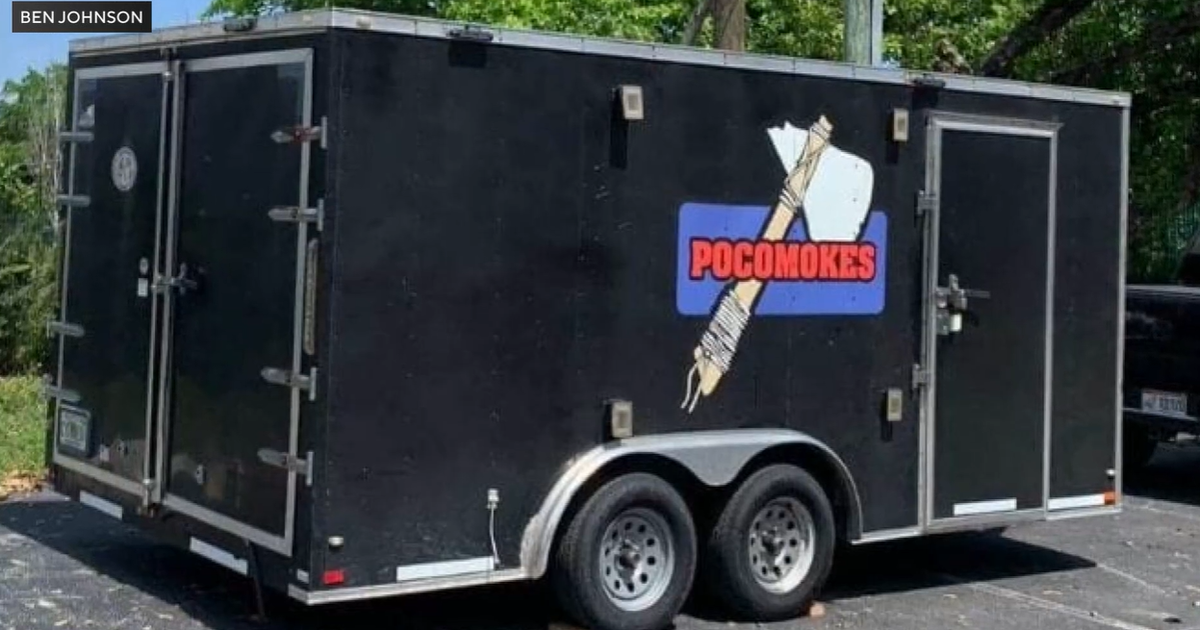Free Weather Alert Service Coming To South Florida Smartphones
MINNEAPOLIS (CBSMiami/AP) — CBS4's weather forecasts are already available on your smartphone. Now with hurricane season about to kick into high gear, the National Weather Service will provide South Floridians with an0ther way to stay safe.
It's a a Wireless Emergency Alert system that begins Thursday. The best part? It is free.
It offers a new way to warn Americans about menacing weather, even if they are nowhere near a television, radio or storm sirens.
Millions of smartphone users nationwide will soon begin receiving text messages about severe weather from a sophisticated government system that can send a blanket warning to mobile devices in the path of a dangerous storm.
The system will notify people about approaching tornadoes, hurricanes, blizzards and other threats. When a warning is issued for a specific county, a message of no more than 90 characters will cause late-model smartphones in that area to sound a special tone and vibrate.
Users do not have to sign up for the service or pay for the text message. And people who prefer not to get the warnings can opt out of the system.
"These alerts will make sure people are aware of any impending danger and provide them with the information needed so they can be safe until the threat is over," said Amy Storey, spokeswoman for CTIA-The Wireless Association, an industry trade group that helped set up the system.
The system does not yet work with all smartphones or in all areas. It is part of a broader alert network the Federal Emergency Management Agency launched in April that can also send public-safety warnings from the president and participating state and local governments. But the weather service estimates that more than 90 percent of the messages will be about storms.
The weather warnings will include tornadoes, hurricanes, typhoons, tsunamis, flash floods, extreme winds, blizzards and ice and dust storms. Designers were concerned about overloading users with too much information, so they deliberately limited the messages to warnings, not watches, and excluded severe thunderstorm warnings, weather service spokeswoman Susan Buchanan said.
Wireless carriers serving almost 97 percent of U.S. subscribers have agreed to participate, including the biggest nationwide companies — AT&T Inc., Verizon Wireless, Sprint Nextel Corp. and T-Mobile USA. Each of the four offers at least some phones capable of receiving emergency alerts, with more on the way.
Sprint, Verizon and T-Mobile say they offer the service nationwide. AT&T only offers it in New York City, Washington, D.C., and Portland, Ore., at the moment. Spokesman Michael Balmoris said the company will add additional markets over time but declined to say which ones or when.
Government officials don't have a good handle on exactly how many capable devices are already in use, but Damon Penn, assistant administrator for national continuity programs at FEMA, said the number is probably in the millions.
He said smartphone users should check with their carriers to find out whether service is available and if their device is able to use it. He said many people own phones equipped to get the new alerts but don't know it yet.
Sprint spokeswoman Crystal Davis said most Sprint smartphones now in use can receive the alerts thanks to recent automatic software upgrades. All new models will be equipped, as will all new tablet devices.
One unanswered question is when the legions of Apple iPhone users will be able to receive alerts. Buchanan said iPhones are supposed to join the system in the fall, but she didn't know if that means only new iPhones, or if software upgrades will make older models capable, too. Representatives of Apple Inc., which is highly secretive about its product upgrades, did not respond to several messages seeking details.
FEMA's system carries three kinds of alerts: presidential alerts, which might deal with national security information such as terrorist attacks; imminent-threat alerts, which include weather warnings as well as public-safety messages from local authorities; and Amber Alerts issued by law enforcement agencies for kidnapped children.
Phone users can opt out of the imminent threat and Amber Alerts, usually just by changing their settings, but they can't opt out of presidential alerts.
Twenty-eight state or local emergency management agencies in about a dozen states are authorized to send imminent-threat alerts including Florida. Eighty-three others are in the process of getting certified.
In Miami-Dade County, the alerts would convey hurricane evacuation information.
Curt Sommerhoff, Miami-Dade's Director of Emergency Management, said the alerts will permit authorities to distribute urgent information to people in danger "whether you're a resident, employee or visitor."
The system doesn't use the satellite-based global positioning system to determine a phone's location. Participating carriers just send an alert out from every cell tower in the affected county, and capable smartphones pick it up.So if a user from Minneapolis travels to Miami, that person would get local warnings for Miami, not their home city. That feature sets the system apart from weather apps that deliver information based on users' ZIP code but don't automatically update their locations when users travel.
Greg Carbin, the warning coordination meteorologist at the national Storm Prediction Center in Norman, Okla, said in a typical year most smartphone users will probably receive relatively few weather alerts.
"Even in those areas of the country where there's a lot of severe weather, the frequency with which you would be alerted is pretty low," Carbin said.
(TM and © Copyright 2012 CBS Radio Inc. and its relevant subsidiaries. CBS RADIO and EYE Logo TM and Copyright 2012 CBS Broadcasting Inc. Used under license. All Rights Reserved. This material may not be published, broadcast, rewritten, or redistributed. The Associated Press contributed to this report.)



